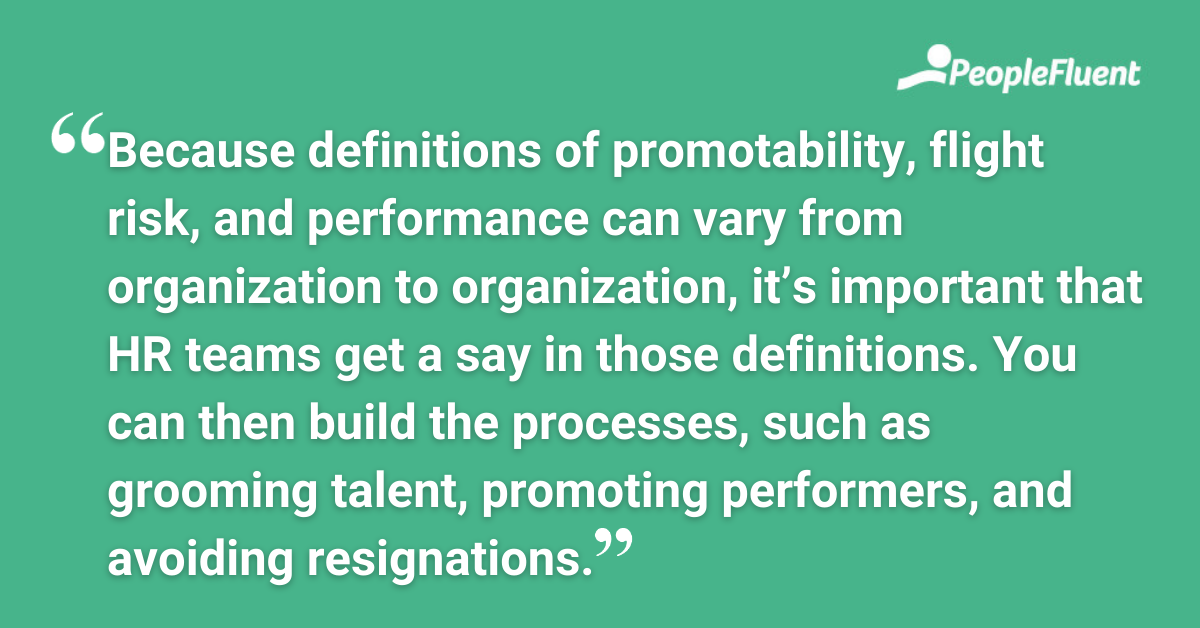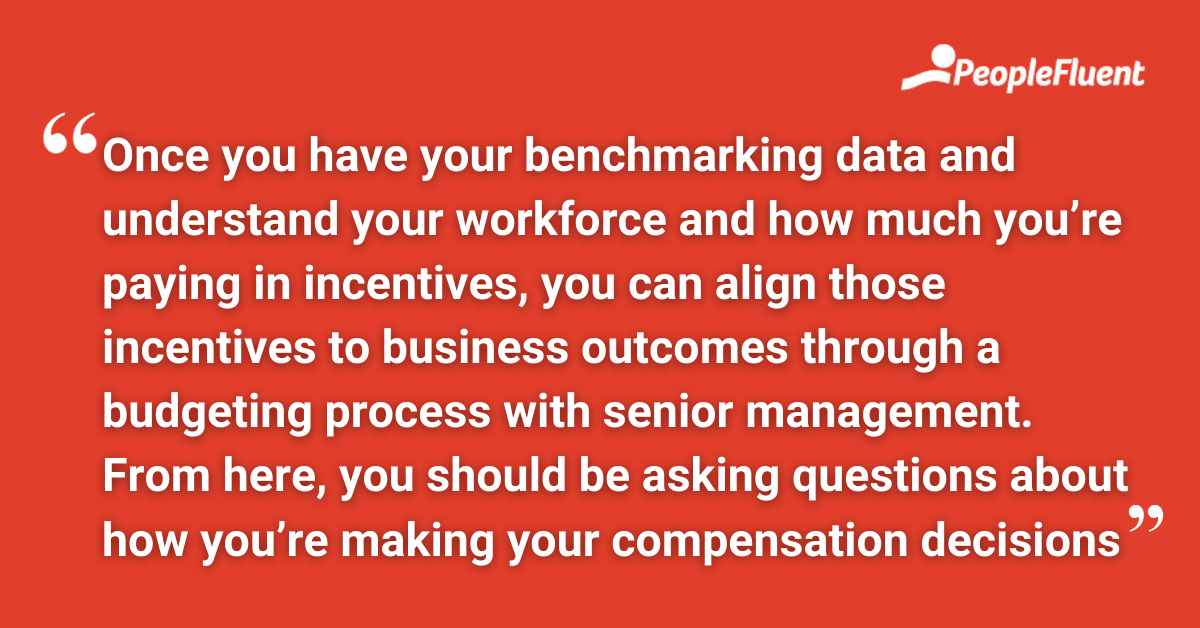Published: Mar 8, 2022Time to read: 7mins Category: Compensation
How Data About Your High Performers Is the Key to Fairer Compensation & Greater Retention
The working world is being reshaped, and HR teams are the first point of contact for leaders who need critical questions answered as soon as possible for the good of the organization. Thankfully, by collecting and studying an increasingly accessible array of data points about your people, you’ll be able to give those decision-makers exactly what they need to make fairer compensation decisions that retain employees.
The Employee Experience Is Critical to Your Strategy
Retention is never not a concern. Right now, however, there’s no denying that it’s a particularly hot topic. The ‘Great Resignation’ is on everybody’s minds, alongside rising consciousness about diverse and inclusive practices, and emerging hybrid work patterns. Here are just some of the concerns currently keeping HR professionals up at night:
- 48% of workers are actively job searching
- It can take over six months to break even on a new hire
- An unengaged employee could result in a productivity loss of 18%
Between increasing burnout, rising resignations, and calls for rising wages, it’s arguably more critical than ever for organizations to better understand employee sentiment. How do they value work? How do they value their own development? How do they value compensation and other forms of remuneration?
Asking the right questions is a great start. But while you may have once been able to have an HR generalist meet with managers and talk through the issues, at scale, systems are needed to help properly assess flight risks and other issues your organization faces. These systems will also help you to put that information in front of the right people. It’s increasingly important to have a real-time understanding of the employee experience in this way: you don’t want to be finding out all these things after your people have given their notice and departed.

HAND-PICKED FOR YOU | ‘4 Secrets to Pay Transparency Success’
How Can Organizations Retain Their Top Performers?
While most organizations would say they want to retain their high performers, the ways in which they need to investigate and prevent attrition can vary widely. In your organization’s own context, you may need to define:
- The key characteristics of a high performer
- The attributes and behaviors that are of the highest value to the organization
- The specific signs of potential that define an individual as a future high performer
- The behaviors that are common when someone is likely to leave the business
Because definitions of promotability, flight risk, and performance can vary from organization to organization, it’s important that HR teams get a say in those definitions. You can then build the processes, such as grooming talent, promoting performers, and avoiding resignations.

YOU MIGHT ALSO LIKE | 'The Top 4 Benefits of Using Compensation Management Software'
Using Data-Led Systems to Retain Talent
Data-led systems can help teams identify where meaningful disparities are and also help you sidestep the biases (unconscious or otherwise) of the individual practitioners who may otherwise be assigned this work.
A data-led approach may start with something as simple as identifying a standard for high-performance across your organization. This could be in terms of vertical responsibility—where you’ve documented that they’re performing at a level above their current position in terms of management, oversight, or drive. Or alternatively, it could be in terms of horizontal load—where you’ve simply measured that they’re out-performing their peers.
This approach would get you away from less-reliable measures that may come up in manager feedback, such as “they work hard”, or “they work through their weekends”. It can also be more easily correlated with organizational, role-based, or department-based outcomes. You should also be trying to understand employee satisfaction, engagement, and flight risk with a similar skew.
Once you start correlating the information and identifying key promotion candidates, high performers, attrition risks, and other key people, work to address their needs, starting with the data-determined standouts in each group.
RECOMMENDED READING TO DOWNLOAD TODAY | ‘Moving Beyond Dashboards: Making People Analytics Work’
Identifying Your Talent Needs—And Building a Compensation Strategy to Meet Them
You’ll need a comparative slate or a benchmark of data when you’re comparing compensation—and good performance data is a great starting point. PeopleFluent can provide the tools that will help you compare performance and different skills, which is the level of depth that you’ll need to go into. Getting this depth correct across departments, within a specific job, or within hybrid jobs with combined responsibilities and skillsets will make your benchmarking more accurate.
Benchmarks aren’t just an internal matter: you’ll need to know how things are changing externally, and may use sources such as Mercer, Willis Towers Watson, Radford/Aon, or any number of competing surveys. These tools do tend to be anywhere between six to 12 months behind. This lag is unfortunate but inevitable as the aggregation process takes time. Organizations ignore the external picture at their peril—and must be somewhat predictive based on the delayed picture they receive.
This lag makes having real-time internal data all the more important, because:
- You need to have a clear picture of where your employees sit within your current pay framework before applying external trends
- Your own employees will be aware of external trends to a degree, and their behaviors may start to reflect them well before data arrives.

GET THE FREE RESOURCE | ‘RFP Checklist for Compensation Pros: Know What to Ask to Get Exactly What You Need’
What Should You Be Asking of Your Compensation Strategy?
Once you have your benchmarking data and understand your workforce and how much you’re paying in incentives, you can align those incentives to business outcomes through a budgeting process with senior management. From here, you should be asking questions about how you’re making your compensation decisions. Questions you may ask include:
Q: How Much Does Our Workforce Cost Us Compared to the Past?
Helps you make decisions such as: What the budgeted cost of employee total rewards should look like in the future.
Q: How Have Total Rewards and Direct Compensation Costs Changed Over Time?
Helps you make decisions such as: How to empower leaders to develop fair compensation strategies for their teams.
Q: How Does the Cost per FTE Differ Between Locations and Worker Demographics?
Helps you make decisions such as: the best actions to take to make a more equal workplace, via the evaluation of compensation ratios variation across different departments, hiring groups, and other attributes.
FURTHER THOUGHTS ON COMPENSATION | ‘6 Ways to Align Compensation With Organizational Goals’
Conclusion: Why Your Systems Must Be High Performers Too
Further to understanding the correlation between performance and compensation, you’ll also want to bring in data elements that really help you prove the urgency of your case. These could be potential impact as well as loss impact—whatever you’ve identified as important to your organization. While business partners can easily sit down at manager level and identify the rewards or the distributions that don’t make sense, the real challenge comes when aggregating large sets of data and making a difference across the whole of a large organization.
You could have a million-dollar issue and because a quick and reliable resolution is essential, only a systems-led approach will get you there.
WANT A DEEPER DIVE INTO THIS SUBJECT? WATCH THIS ON-DEMAND WEBINAR | ‘Make Better Talent Decisions With People Analytics: Use Data-Driven Reviews to Rethink Performance, Compensation, and Succession Planning’
Use Enhanced Compensation Management Technology to make better compensation decisions
Explore how it all works by requesting a demo of PeopleFluent Compensation enhanced with People Analytics features and functionality.